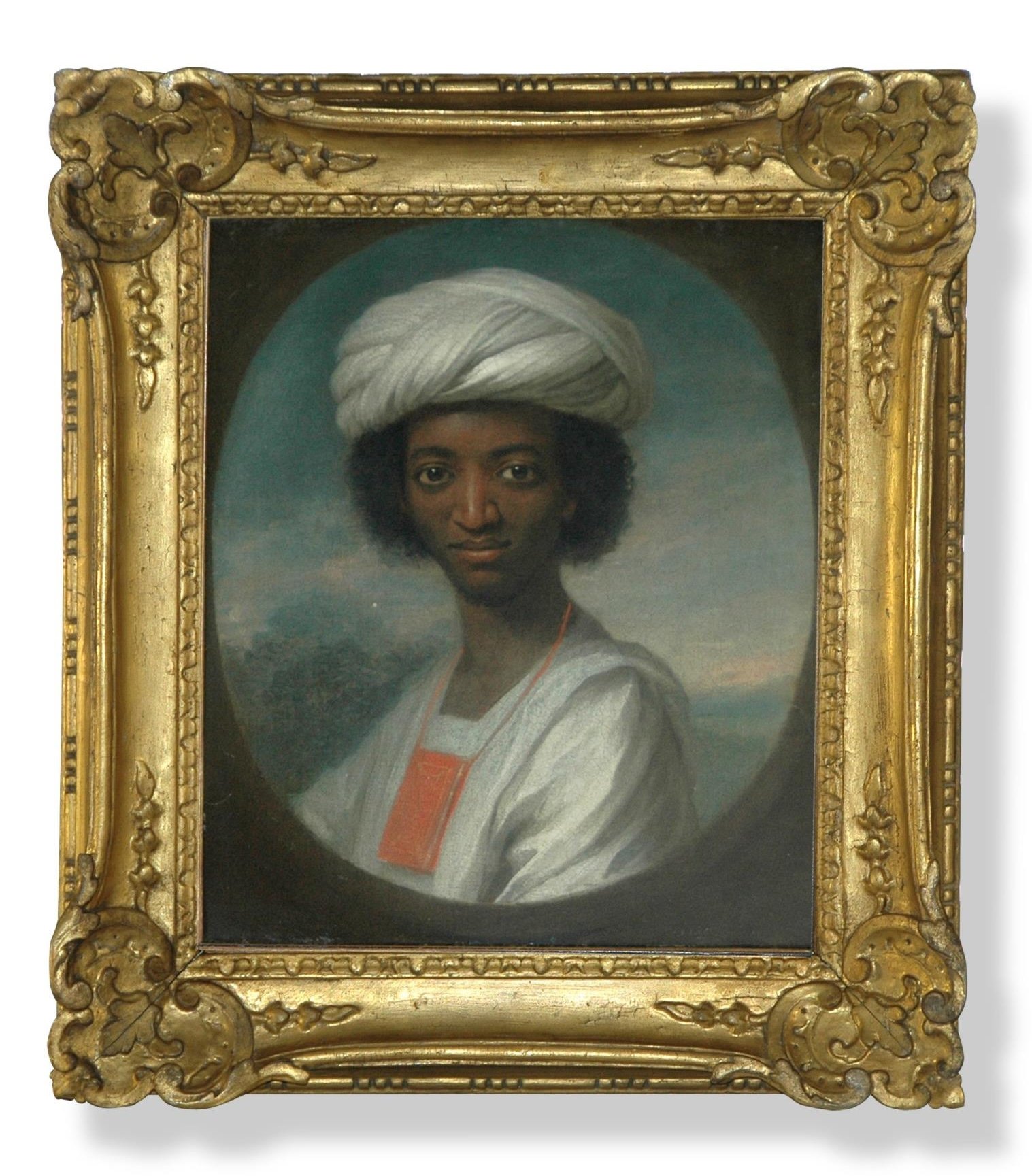
A rare oil painting of an African slave from circa 1733 has been acquired by Virginia’s Jamestown-Yorktown Foundation, which runs the history museums at the Jamestown Settlement and Yorktown Victory Center. The portrait is one of a pair of paintings by William Hoare of Bath that shows the earliest known depictions of an African slave in the American colonies.
The portrait depicts Ayuba Suleiman Diallo, an educated African from a prominent family of Muslim clerics who was kidnapped on the Gambia River in 1731 and sold into slavery in colonial Maryland. Two years later, thanks to his future biographer Thomas Bluett, Diallo was freed and journeyed to England.
There, he sat for a portrait with Hoare, despite religious misgivings. In the painting, Diallo wears his traditional African garb: a white robe and turban, with a bright red leather pouch that probably contains the Koran, worn around his neck.
The work has been purchased for the planned American Revolution Museum at Yorktown, scheduled to open in late 2016, but will be on display at the Yorktown Victory Center from June 14 to August 3. A second version of the painting can be seen at the National Portrait Gallery of London thanks to a long-term loan from the Qatar Museums Authority.
“This portrait is a powerful symbol of the diversity of colonial America’s population, which included people from many different African cultures,” Jamestown-Yorktown Foundation trustee Fred D. Thompson Jr. said in a statement. “Diallo—his image and story—is an ideal teaching opportunity for the American Revolution Museum at Yorktown galleries.”
“Diallo’s visage speaks for the hundreds of thousands of enslaved Africans and African Americans who remain largely unknown, yet who constituted a major part of late-colonial America’s population,” Thomas E. Davidson, Jamestown-Yorktown Foundation senior curator, added.
Davidson hopes the planned American Revolution Museum will help “convey the way in which the American Revolution represented the beginning of the end for slavery in the United States. While the Revolution did not end slavery by itself, it created an intellectual, moral, and political climate in which the practice could not and did not continue forever.”
Diallo’s story, Some Memoirs of the Life of Job, the Son of Solomon, the High Priest of Boonda in Africa; Who was a Slave About Two Years in Maryland; and Afterwards Being Brought to England, was Set Free, and Sent to His Native Land in the Year 1734, as told by Bluett, was eventually embraced by the abolitionist movement.